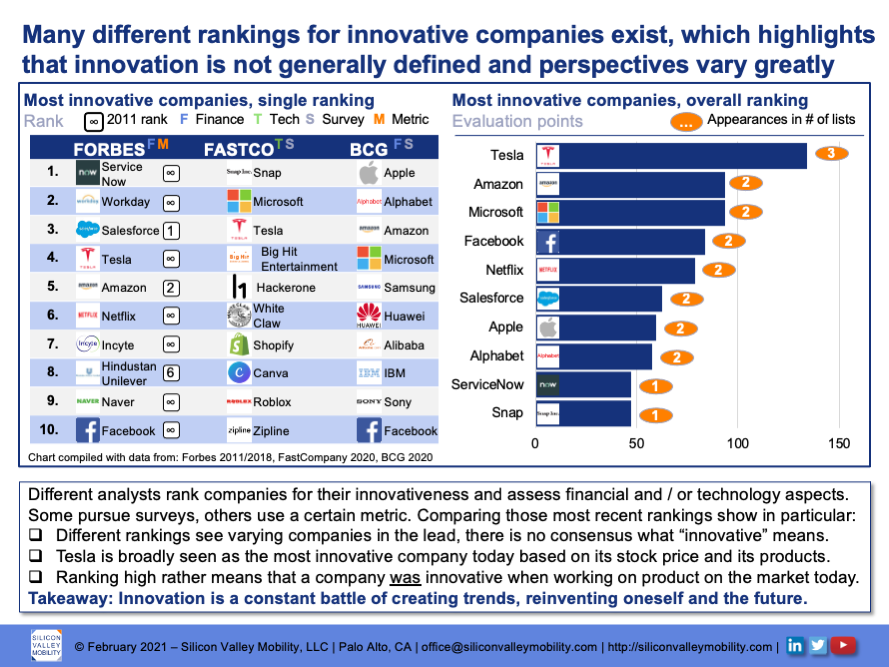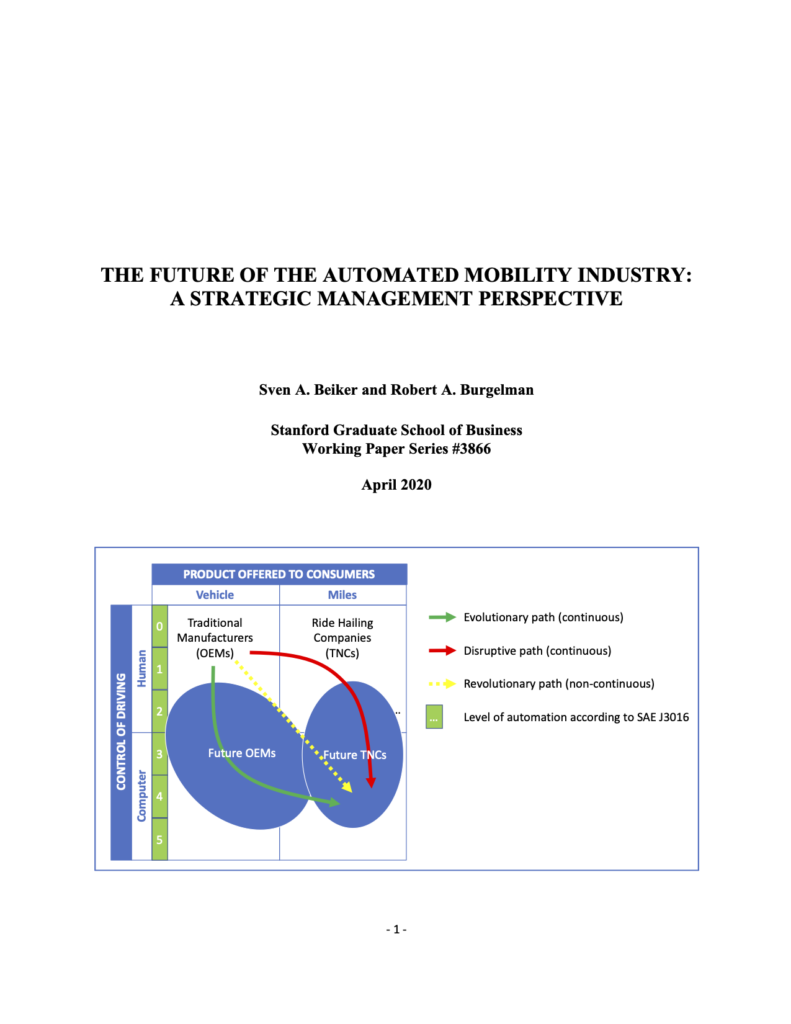Silicon Valley Mobility Chart of the Month, February 2021
Chart of the Month by Silicon Valley Mobility for February 2021: Most innovative companies – Tesla of course!?
There is a lot of talk about innovative companies and often Tesla ranks at the top; together with Amazon, Alphabet / Google, and other tech firms. I took a closer look at different rankings and found that those actually don’t agree much as to who is “innovative”. Some conduct surveys to determine a ranking, others compare stock price vs. revenue (the latter in particular favoring Tesla). Here is my chart that gives some pretty interesting insights into this:

The chart shows that Tesla shows up in three recent rankings, which also makes it the overall leader – fair enough. However, going down in those rankings, one sees very different companies listed.
In the left third of the chart there is also a comparison how the top 10 of Forbes Most Innovative Companies ranked in 2018 vs. 2011. Most of them were not listed at all in 2011, incl. Tesla. However, I would content that was when Tesla certainly was innovative and only today we see the results. Conversely maybe Apple, they were high on everyone’s list in the early 2010s and where are they headed now?
This is a reminder that (a) innovativeness lies in the eye of beholder and (b) innovation is a constant battle.
Which companies would be on your list?

